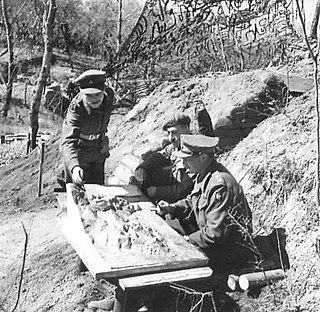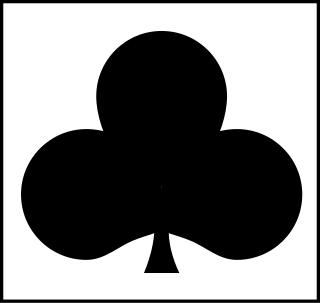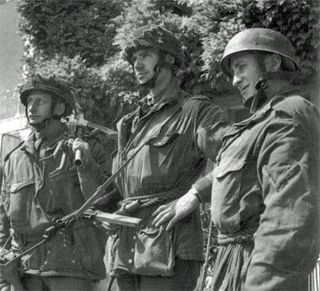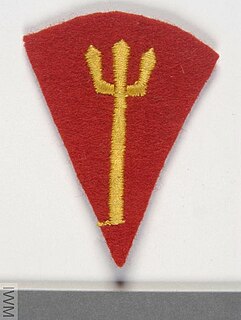 W
WDuring the Second World War, the basic tactical formation used by the majority of combatants was the division. It was a self-contained formation that possessed all the required forces for combat, which was supplemented by its own artillery, engineers, communications, and logistical units. On 3 September 1939, at the start of the war, the United Kingdom had two armoured and 24 infantry divisions. In addition, the army had seven anti-aircraft divisions. The anti-aircraft divisions were not comparable in role to formations that were intended to be deployed for combat such as infantry divisions. In September, the British Army stated that 55 divisions would be raised to combat Germany. The United Kingdom would provide 32 of these formations, and the remainder would be raised by the British Dominions and India.
 W
WThe 1st (African) Division was a British Empire colonial unit during the Second World War. The division was formed on 24 July 1940 in East Africa. On 24 November of that year, the division was re-designated as the British Army's 11th (African) Division. The division were composed primarily of West African and East African troops. It was disbanded on 23 November 1941 and its component units reassigned.
 W
WThe 1st Cavalry Division was a regular Division of the British Army during the First World War where it fought on the Western Front. During the Second World War it was a first line formation, formed from Yeomanry Regiments. It fought in the Middle East before being converted to the 10th Armoured Division.
 W
WThe 1st Airborne Division was an airborne infantry division of the British Army during the Second World War. The division was formed in late 1941 during World War II, after the British Prime Minister, Winston Churchill, demanded an airborne force, and was initially under command of Major-General Frederick A. M. Browning. The division was one of two airborne divisions raised by the British Army during the war, with the other being the 6th Airborne Division, created in May 1943, using former units of the 1st Airborne Division.
 W
WThe Chindits, known officially as the Long Range Penetration Groups, were special-operations units of the British and Indian armies which saw action in 1943–1944 during the Burma Campaign of World War II.
 W
WThe 6th Airborne Division was an airborne infantry division of the British Army during the Second World War. Despite its name, the 6th was actually the second of two airborne divisions raised by the British Army during the war, the other being the 1st Airborne Division. The 6th Airborne Division was formed in the Second World War, in mid-1943, and was commanded by Major-General Richard N. Gale. The division consisted of the 3rd and 5th Parachute Brigades along with the 6th Airlanding Brigade and supporting units.
 W
WThe 11th Infantry Division was a British Empire colonial unit formed in February 1943 during the Second World War.
 W
WThe 81st Division was formed under British control during the Second World War. It took part in the Burma Campaign.
 W
WThe 82nd Division was formed under British control during the Second World War. It took part in the later stages of the Burma Campaign and was disbanded in Burma between May and September 1946.
 W
WThe Beauman Division was an improvised formation of the British Expeditionary Force (BEF) during the Second World War, which fought in France against the German 4th Army in June 1940, during Fall Rot, the final German offensive of the Battle of France.
 W
WThe Royal Marine Brigade and subsequent Royal Marine Division were amphibious warfare units formed by the British Royal Marines at the start of the Second World War.